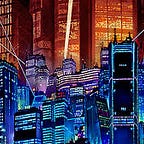Cannery Row- the strength of Values in Steinbeck’s book.
This story isn’t centred on a particular character or characters, that doesn’t follow a plot. It's just a tale of mundane, day to day life happenings in and around a small place named Cannery Row, which was at the time named Oceanview avenue, located in the city of Monterey. A very small place that is an amalgamation of all human emotions from greed, gratitude to absurdity. It is inhabited by some interesting humans who are living in great poverty without any kind of support from anyone but with a humble pride in their souls.
It is a collection of Vignettes based around the lives of the people living in Cannery Row. How even being dubious and unreliable still makes you have trust in the same people. How they have to help each other despite distrust and differences. It was written by John Steinbeck in the 1940s, just around World war-II, which actually destroyed the already diminishing population of the area, along with the forced closure of the canneries.
This story revolves around the themes of Virtue and vice, melancholy or bitterness and happiness, loneliness, empathy with kindness and friendship. And, most of all Chaos is intertwined with randomness showing our reality as humans.
Steinbeck does a great job in creating characters who are an outstanding example of all these inverse attributes, like people with vices develop virtues over time or these values can even coexist with each other. An example of this is The Bear Café in the area, which is a brothel run by a lady named Dora who despite her dishonourable image is a great epitome of Honesty, kindness and charity. Thus, showing how Vice and virtue can exist in the same place or body regardless of a ‘morally corrupt’ tag imposed by the society.
How a character named Lee Chong was introduced prior to everyone, shows how important a shop can be in a region, a reason for people to meet, hang out, eat, buy stuff for themselves and their families. Lee Chong is a shrewd man but is good and reasonable at the base of his heart.
It seems that the timeline of the story is around the Great Depression, during which America had high levels of unemployment, thus pushing its vast amount of citizens to the brink of Poverty, who had to come up with different ways of sustaining their livelihood. Like the characters ‘Mack and the boys’, people had to remain jobless and homeless, even, sometimes putting their muscle or kindness to use.
Steinbeck’s description of these people and the region feels pretty laid-back and light-hearted, despite the hardships they were facing with violence, theft, poverty, chaos in general. But, there is a strong message which is cemented strongly through the vignettes of these people, showing the strength of the human spirit keeping all the folks, united and lively. So, it’s a book filled with humour, some cynicism, empathy with the mighty force of optimism in the background. All in all, everyone is in a deep puddle economically, but with their good attributes and mutual support for each other, they are somewhat happy and contentful.
“What can it profit a man to gain the whole world and to come to his property with a gastric ulcer, a blown prostate, and bifocals?”
“What shall it profit a man, if he shall gain the whole world, and lose his own soul?”
